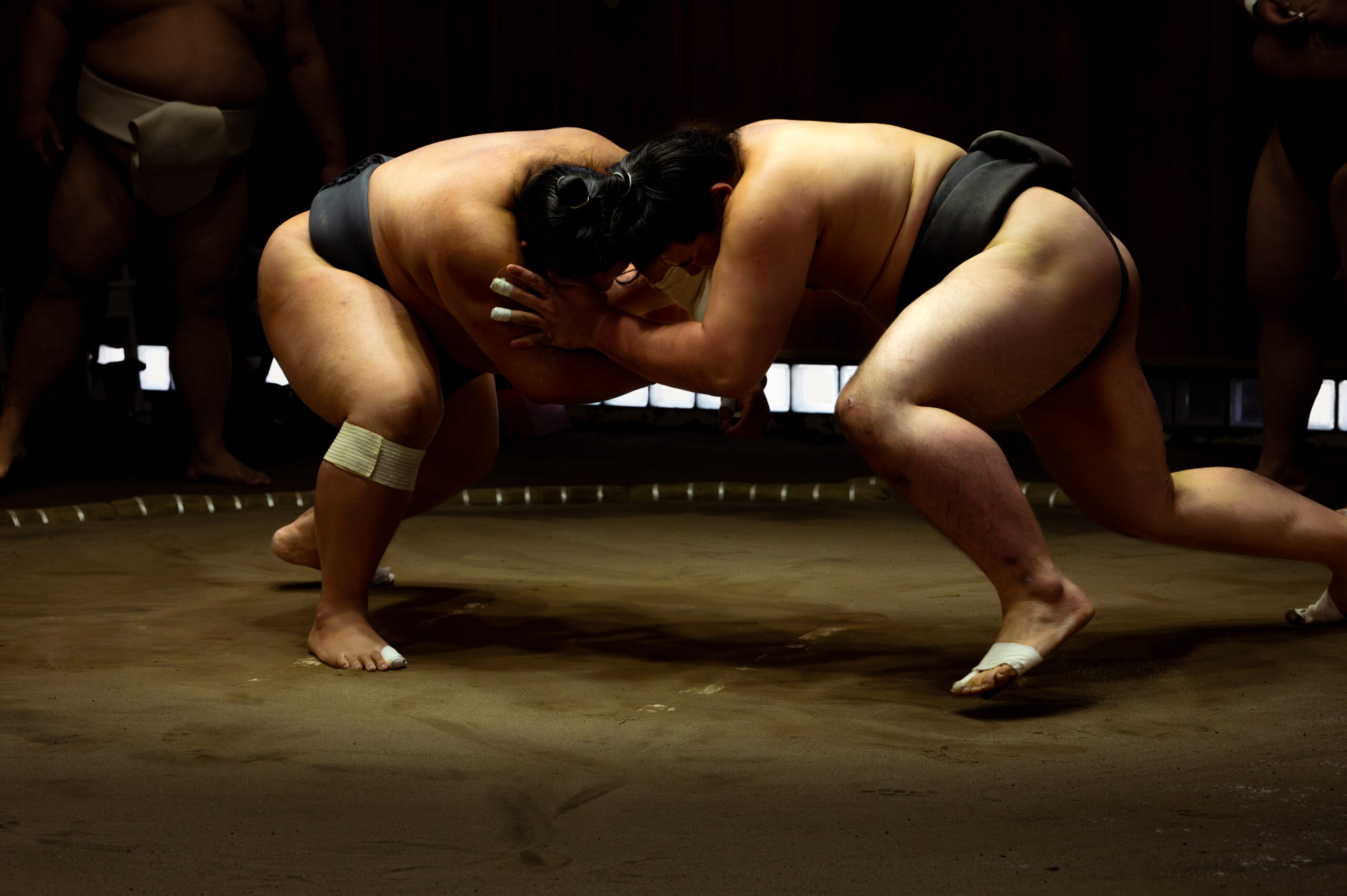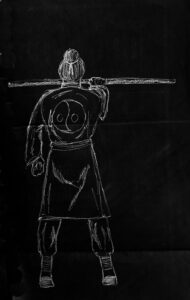===
Sumo wrestling, a time-honored sport steeped in history and tradition, is more than just a physical contest; it is a vibrant cultural phenomenon that reflects Japan’s values and beliefs. Emerging from ancient rituals and evolving through centuries, sumo wrestling encapsulates the spirit of its nation, blending athleticism with spirituality. This article delves deep into the rich history and traditions of sumo wrestling, exploring its origins, significance, and the unique aspects that continue to captivate audiences around the world.
Sumo Wrestling: A Deep Dive into Japan’s Unique Tradition
At its core, sumo wrestling is a sport that involves two wrestlers, known as rikishi, competing in a circular ring called the dohyo. Wrestlers aim to force their opponent out of the ring or to make any part of their opponent’s body, other than the soles of their feet, touch the ground. This seemingly simple premise belies the complexity and depth of the sport’s history and practice. Recognized as Japan’s national sport, sumo encapsulates various elements, including ritual, tradition, and social structure, creating a multifaceted experience that transcends mere competition.
Sumo wrestling is deeply rooted in Japan’s cultural identity. The sport has been embraced for centuries, serving not only as entertainment but also as a means of preserving ancient customs. The ceremonies and rituals that accompany sumo matches elevate the sport beyond athleticism, transforming it into a spiritual experience. This unique interplay of physical prowess and cultural significance makes sumo an integral part of Japanese heritage, drawing both domestic and international audiences to its matches.
The visual aspects of sumo wrestling, from the elaborate ceremonial attire worn by the wrestlers to the distinctive hairstyles known as "mage," are emblematic of Japan’s rich artistic traditions. The wrestlers’ attire is not merely functional; it represents a lineage of honor, discipline, and dedication. These visual components contribute significantly to the spectacle of sumo, making it a captivating spectacle filled with symbolism and meaning.
While sumo wrestling has its roots deeply entrenched in Japanese culture, it has also adapted to modern influences, allowing it to remain relevant in today’s fast-paced society. New technologies, media coverage, and the internet have all played a role in boosting the sport’s visibility and accessibility. As sumo continues to evolve, it maintains a delicate balance between preserving its rich traditions and embracing modernity, ensuring its survival for future generations.
Sumo wrestling’s appeal extends beyond national borders. As international interest grows, the sport has begun to attract wrestlers from diverse backgrounds, enriching the sumo landscape with a variety of perspectives and techniques. This global reach not only diversifies the sport but also fosters a greater appreciation for its complexity and heritage.
In conclusion, sumo wrestling is a unique blend of tradition, culture, and athleticism. It stands as a testament to Japan’s enduring values and offers insight into the nation’s identity. As the sport continues to garner attention on the world stage, its rich history and practices remain a source of pride for Japan and a captivating intrigue for fans around the globe.
The Origins of Sumo: Tracing Its Historical Roots
The origins of sumo wrestling can be traced back over a thousand years, with its roots embedded in the ancient Shinto religion. The earliest forms of sumo were not merely a sport but rather a ritualistic dance performed to appease the gods and ensure a bountiful harvest. Historical texts, such as the "Nihon Shoki," mention the practice of wrestling as early as the 8th century. These early matches were often held in conjunction with religious ceremonies, highlighting the sport’s spiritual significance.
As time progressed, sumo began to evolve into a more organized form of competition. By the Edo period (1603-1868), sumo had transformed into a popular form of entertainment, with matches taking place in public arenas, drawing large crowds. The establishment of the first formal sumo associations helped define the sport’s structure and rules, thereby solidifying its place in Japanese culture. The shift from a ritualistic activity to a widely recognized sport marked a significant milestone in sumo’s history, paving the way for the modern era.
The influence of samurai culture on sumo wrestling cannot be overstated. During the Edo period, sumo wrestlers enjoyed considerable status, often regarded as heroes in Japanese society. They were admired for their physical prowess and discipline, embodying the samurai ideals of strength, courage, and honor. This connection between sumo and the samurai, who were seen as the elite warriors of their time, laid the groundwork for the sport’s enduring cultural significance.
Cultural exchange played a pivotal role in shaping sumo wrestling as well. As Japan interacted with other nations, elements from foreign cultures began to influence the sport. Over time, wrestlers adopted new techniques and training methods, blending them with traditional practices. This adaptability contributed to sumo wrestling’s resilience and continued relevance in an ever-changing world.
While sumo wrestling has evolved significantly since its inception, its historical roots remain an essential aspect of its identity. The rituals, symbols, and narratives associated with sumo continue to honor its past, reminding participants and spectators alike of the sport’s rich heritage. The enduring connection to its origins ensures that sumo will forever retain its significance in Japanese culture.
In summary, the origins of sumo wrestling reflect a dynamic interplay between spirituality, cultural evolution, and social status. This historical context enriches the experience of sumo, providing a deeper understanding of its significance in contemporary Japan. As sumo continues to evolve, its roots serve as a foundation upon which the sport thrives, ensuring its lasting legacy.
The Evolution of Sumo Wrestling Through the Ages
The evolution of sumo wrestling is a mirror reflecting the changing dynamics of Japanese society through the ages. Starting as a ritualistic practice, sumo gradually transitioned into a performance sport during the Heian period (794-1185). The incorporation of entertainment value began to attract larger audiences, and the matches became more structured with defined rules and regulations. This shift marked the beginning of sumo’s journey toward becoming a structured sport, aimed not only at spiritual fulfillment but also at public entertainment.
During the Edo period, sumo wrestling blossomed into a popular social event. The establishment of organized competitions, along with the emergence of permanent sumo stables, allowed wrestlers to train rigorously while showcasing their skills to the masses. The growth of urban centers, especially Edo (now Tokyo), facilitated the rise of sumo as a significant form of popular culture. As sumo wrestlers gained celebrity status, they became important figures in society, and their matches were seen as major events that merged sports with entertainment.
The Meiji Restoration in the late 19th century brought about rapid modernization and Western influence on many aspects of Japanese life, including sumo wrestling. Despite these changes, sumo managed to retain its core traditions and rituals. The sport adapted by incorporating more formalized structures, including the introduction of a ranking system that classified wrestlers based on their performance. The establishment of the Japan Sumo Association in the early 20th century further professionalized the sport, allowing for organized tournaments, standardized rules, and an emphasis on training.
World War II posed significant challenges for sumo wrestling, leading to a decline in popularity and participation. However, post-war Japan witnessed a revival of interest in traditional culture, including sumo. Wrestlers who emerged during this period, such as the legendary Taiho, not only contributed to the resurgence of the sport but also elevated its status on the international stage. As sumo wrestling regained momentum, it began to attract a global audience, marking a new chapter in its evolution.
In the late 20th century and early 21st century, sumo wrestling faced challenges related to modernization and the changing social landscape. The sport’s traditional image was scrutinized, necessitating adaptations to appeal to younger generations. Efforts to internationalize sumo, including hosting tournaments abroad and welcoming foreign wrestlers, played a crucial role in maintaining its popularity. Today, sumo wrestling is a blend of age-old customs and contemporary practices, continually evolving to adapt to the expectations of a diverse audience.
Through centuries of transformation, sumo wrestling has maintained its cultural significance and resonance with Japanese identity. The evolution of the sport is a testament to its resilience and adaptability, ensuring that sumo remains not just a sport but a living tradition that continues to inspire and captivate audiences across the globe.
The Spiritual Significance of Sumo in Japanese Culture
Sumo wrestling is inextricably linked to spirituality, serving as a conduit between the physical and the divine. Stemming from Shinto beliefs, sumo matches are imbued with religious undertones, reflecting the cultural significance of the sport beyond mere entertainment. It is believed that the very act of wrestling is a way to honor the gods and commemorate life’s cyclical nature, highlighting the connection between humanity and the spiritual realm.
The dohyo, or sumo ring, is considered a sacred space, meticulously prepared and treated with reverence. Before each match, rituals are performed to purify the ring, often involving the symbolic scattering of salt, which is thought to ward off evil spirits. Wrestlers participate in these ceremonial acts as a way to honor their craft and the spirits that oversee their endeavors. This spiritual aspect of sumo wrestling creates an atmosphere steeped in tradition and respect, reinforcing the idea that the sport is a reflection of Japan’s cultural values.
Wrestlers often participate in rituals and ceremonies designed to pay homage to the gods and invoke blessings for success and safety. These rituals include the "shinto purification ceremony" and various offerings made at shrines. Wrestlers regard these spiritual practices as essential components of their training and competition, fostering a deep sense of purpose and connection to their heritage. This intertwining of spirituality and athleticism ensures that sumo wrestling transcends the physical realm, becoming an expression of faith and cultural identity.
The spiritual significance of sumo extends beyond individual matches and rituals; it encompasses the entire ethos of the sport. Wrestlers are expected to embody the virtues of humility, respect, and discipline, aligning their actions with the teachings of Shinto. The moral framework provided by these spiritual beliefs shapes the culture within sumo stables, fostering camaraderie and mutual support among rikishi. As a result, sumo wrestling becomes not just a competition, but a way of life that emphasizes personal growth and communal responsibility.
Moreover, sumo wrestling serves as a means of cultural transmission, instilling values in younger generations. Aspiring wrestlers are taught the importance of respect, discipline, and dedication to one’s craft, aligning their personal development with the spiritual essence of sumo. This continuity of tradition ensures that the spiritual dimensions of sumo are preserved, allowing the sport to remain relevant in modern society.
In summary, the spiritual significance of sumo wrestling is a fundamental aspect of its identity, shaping the practices and values that define the sport. Through its rituals, moral teachings, and cultural transmission, sumo encapsulates the essence of Japanese spirituality, reinforcing the belief that athleticism is intertwined with the divine. As sumo continues to evolve, its spiritual roots remain a vital aspect of its legacy, ensuring that the sport remains a reflection of Japan’s cultural soul.
Rituals and Ceremonies: The Heart of Sumo Wrestling
Rituals and ceremonies are integral to sumo wrestling, serving as a bridge between the physical competition and the spiritual world. These practices occur at numerous stages, from the preparation of the dohyo to the post-match celebrations, each imbued with cultural significance. The rituals are not merely formalities; they reinforce the bond between the wrestlers, their craft, and the spiritual realm, ensuring that sumo remains a sacred tradition.
One of the most significant rituals is the purification of the dohyo. Before each tournament, the ring is blessed and cleansed through the scattering of salt, a practice rooted in Shinto beliefs. This ritual signifies the removal of impurities and the invocation of divine protection. Wrestlers also perform a series of ceremonial stomps and movements, known as "shiko," which are believed to drive away evil spirits and prepare the body and mind for the battle ahead. These rituals establish an atmosphere of reverence and commitment to the sport.
Another essential ceremony is the "dohyō-iri," or ring-entering ceremony, which marks the official opening of a sumo tournament. During this event, the top-ranked wrestlers don ceremonial attire, including a vibrant kesho-mawashi, and perform a choreographed procession into the ring. This spectacle serves not only as an introduction to the wrestlers but also as a celebration of their skill and status within the sport. The ceremony highlights the aesthetic beauty of sumo, showcasing the elaborate costumes and graceful movements that characterize the art.
Post-match rituals also play a crucial role in sumo wrestling. After a match, the winner often performs a victory dance called "shirodaiko," which symbolizes triumph over adversity. This dance serves as a moment of reflection, allowing wrestlers to connect with their emotions and express gratitude for their victory. Additionally, the loser is expected to show respect and humility, bowing to the victor in a display of sportsmanship that reinforces the camaraderie and mutual respect inherent in sumo culture.
The importance of rituals extends beyond the physical acts themselves; they embody the values that permeate sumo wrestling. The emphasis on discipline, respect, and humility is reinforced through these ceremonies, shaping the character of each wrestler. The communal aspect of rituals fosters a sense of belonging among rikishi, emphasizing the shared responsibility of upholding the traditions and values of sumo.
In conclusion, rituals and ceremonies are the heart of sumo wrestling, anchoring the sport in its cultural and spiritual roots. These practices infuse the competition with meaning, transforming each match into a celebration of tradition, respect, and honor. The continued adherence to these rituals ensures that sumo remains a vibrant expression of Japanese culture, celebrating both the athletic prowess of the wrestlers and the sacredness of their craft.
Training Regimens: How Sumo Wrestlers Prepare for Competitions
Training for sumo wrestling is a rigorous and demanding process, often likened to that of elite athletes in other sports. Wrestlers, or rikishi, typically train in a sumo stable (beya), where they follow a structured regimen designed to enhance their physical strength, agility, and technical skills. The training environment is highly disciplined, reflecting the traditional values ingrained in sumo culture.
The daily training routine usually begins early in the morning, often around 5:00 AM. Wrestlers start with warm-up exercises, which may include stretching, running, and basic strength-building movements. These initial exercises help to prepare their bodies for the intense physical demands of the day ahead. The emphasis on conditioning is critical, as sumo wrestlers require both strength and stamina to endure lengthy matches against formidable opponents.
Following the warm-up, rikishi engage in practice bouts known as "shiai." These sparring sessions allow wrestlers to hone their techniques and improve their understanding of various wrestling styles. During these practice matches, rikishi learn to apply their strength and leverage effectively, developing the skills necessary to outmaneuver their opponents in actual competitions. The experienced wrestlers often mentor younger members, fostering a spirit of camaraderie and mutual growth.
In addition to physical training, sumo wrestlers must also focus on their diet. Nutrition plays a crucial role in a rikishi’s ability to maintain their size and strength. Wrestlers typically consume a calorie-dense meal known as "chanko-nabe," a hearty stew packed with protein and vegetables. This traditional dish is often shared among the stable members, reinforcing the communal aspect of sumo culture. The importance of nutrition in training cannot be overstated, as wrestlers strive to achieve and maintain their ideal weight for optimal performance.
Mental preparation is another key component of a sumo wrestler’s training regimen. Wrestlers are taught to cultivate a strong mindset, emphasizing the importance of mental resilience, focus, and discipline. Techniques such as meditation and visualization are often incorporated into training to help rikishi maintain composure during high-pressure situations. This mental fortitude is essential, as sumo matches can be physically demanding and emotionally charged.
In summary, the training regimens of sumo wrestlers are characterized by a blend of physical conditioning, technical skill development, and mental preparation. The disciplined environment of the sumo stable fosters growth and camaraderie among rikishi, ensuring they are well-equipped to face the challenges of competition. As training practices continue to evolve, the dedication and commitment of sumo wrestlers to their craft remain steadfast, solidifying the sport’s enduring legacy.
The Role of the Stable: Life Inside a Sumo Beya
The sumo stable, or beya, serves as the foundation of a rikishi’s life, playing a critical role in their training and development. Each stable is led by a stablemaster, typically a former top-level wrestler, who oversees the daily operations and guides the training of the rikishi under their care. The stable environment is one of strict hierarchy and discipline, reflecting the traditional values of sumo culture.
Life in a sumo stable is characterized by a rigorous daily routine. Wrestlers rise early in the morning to begin their training sessions, which include physical conditioning, practice bouts, and technical drills. The structured nature of life in a beya fosters a sense of responsibility and accountability among the rikishi, as they are expected to support one another in their training endeavors. This communal aspect of stable life helps to strengthen bonds among wrestlers, creating a family-like atmosphere.
In addition to training, sumo wrestlers are responsible for various chores and tasks within the stable. These duties may include cooking, cleaning, and maintaining the facilities, reinforcing the principles of hard work and humility. Younger wrestlers are often tasked with serving their senior counterparts, fostering respect for hierarchy and tradition within the stable. This system of mentorship and apprenticeship is a cornerstone of sumo culture, ensuring that knowledge and techniques are passed down through generations.
Social dynamics within a beya can be complex, with relationships often dictated by rank and age. The stability of these relationships is essential for maintaining harmony within the stable. Senior wrestlers are expected to mentor and guide their juniors, while younger rikishi learn to respect and follow the leadership of their elders. This hierarchical structure ensures that each wrestler understands their role within the group, promoting a sense of unity and shared purpose.
The sumo stable also functions as a support system for wrestlers beyond the confines of training. Many rikishi form close friendships and deep connections with their stablemates, offering emotional support during the ups and downs of their careers. This camaraderie is vital, as the journey of a sumo wrestler can be fraught with challenges, including injuries and competition pressures. The sense of belonging and support found within a beya can significantly influence a wrestler’s success and well-being.
In conclusion, life inside a sumo stable is a blend of rigorous training, communal living, and adherence to tradition. The beya serves as a nurturing environment for rikishi, where they develop not only their athletic skills but also their character and values. As the foundation of the sumo wrestling experience, the stable plays a vital role in shaping the future of the sport and its practitioners.
Iconic Sumo Tournaments: Events That Define the Sport
Sumo wrestling is punctuated by a series of iconic tournaments that capture the attention of fans both in Japan and around the world. These events, known as honbasho, take place throughout the year and serve as the pinnacle of competition for rikishi. Each tournament features a series of matches that determine the rankings and standings of the wrestlers, making them crucial moments in the sumo calendar.
The six major tournaments held annually are held in January (Hatsu), March (Haru), May (Natsu), July (Nagoya), September (Aki), and November (Kyushu). Each tournament lasts for 15 days, with numerous bouts taking place each day. The atmosphere during these events is electric, as thousands of fans gather








